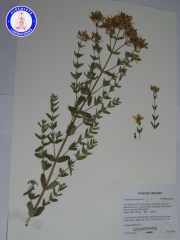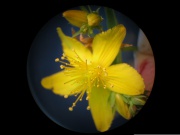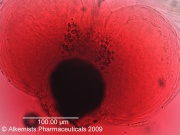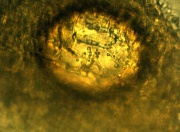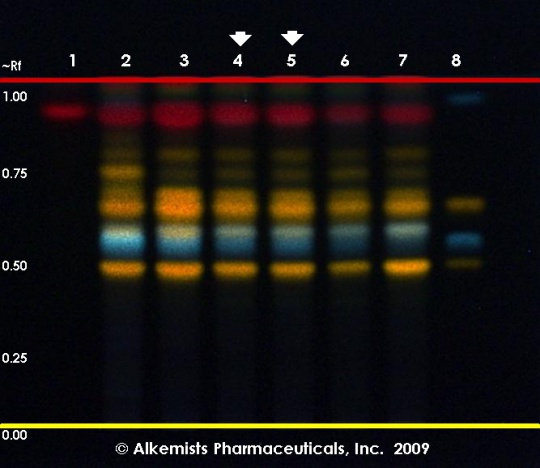Hypericum perforatum (flowering tops)
Contents |
Introduction
Introduction from Wikipedia, the free encyclopedia (http://en.wikipedia.org/wiki/Hypericum_perforatum, retrieved 02/27/2012).
Saint John's wort (traditionally /ˈsɪndʒənzwɜrt/ sin-jənz-wurt; now commonly /wɔrt/, as spelt) is the plant species Hypericum perforatum, and is also known as Tipton's weed, chase-devil, or Klamath weed.
With qualifiers, St John's wort is used to refer to any species of the genus Hypericum. Therefore, H. perforatum is sometimes called common St John's wort to differentiate it. The species of Hypericum are classified in the Hypericaceae family, having previously been classified as Guttiferae or Clusiaceae. Approximately 370 species of the genus Hypericum exist worldwide with a native geographical distribution including temperate and subtropical regions of North America, Europe, Turkey, Russia, India, China and Brazil.
Hypericum perforatum is a yellow-flowering, stoloniferous or sarmentose, perennial herb indigenous to Europe, which has been introduced to many temperate areas of the world and grows wild in many meadows. The common name comes from its traditional flowering and harvesting on Saint John's day, 24 June. The genus name Hypericum is derived from the Greek words hyper (above) and eikon (picture), in reference to the traditional use of the plant to ward off evil, by hanging plants over a religious icon in the house during Saint John's day. The species name perforatum refers to the presence of small oil glands in the leaves that look like windows, which can be seen when they are held against the light.
St John's wort is a perennial plant with extensive, creeping rhizomes. Its stems are erect, branched in the upper section, and can grow to 1 m high. It has opposing, stalkless, narrow, oblong leaves that are 12 mm long or slightly larger. The leaves are yellow-green in color, with transparent dots throughout the tissue and occasionally with a few black dots on the lower surface. Leaves exhibit obvious translucent dots when held up to the light, giving them a ‘perforated’ appearance, hence the plant's Latin name.
Its flowers measure up to 2.5 cm across, have five petals, and are colored bright yellow with conspicuous black dots. The flowers appear in broad cymes at the ends of the upper branches, between late spring and early to mid summer. The sepals are pointed, with glandular dots in the tissue. There are many stamens, which are united at the base into three bundles.
When flower buds (not the flowers themselves) or seed pods are crushed, a reddish/purple liquid is produced.
The quoted text in this section was licensed for use under the Creative Commons ShareAlike License, version 3.0: http://creativecommons.org/licenses/by-sa/3.0/
Botanical Entries
|
|
Macroscopic Entries
|
Microscopic Entries
|
|
HPTLC Entries
|
St. John's Wort (herb) (Hypericum perforatum) Lane Assignments Lanes, from left to right (Track, Volume, Sample):
Reference materials used here have been authenticated by macroscopic, microscopic &/or TLC studies according to the reference source cited below held at Alkemists Laboratories, Costa Mesa, CA. Stationary Phase Silica gel 60, F254, 10 x 10 cm HPTLC plates Mobile Phase ethyl acetate: Acetic acid: HCOOH: H2O [10/1.1/1.1/2.4] Sample Preparation Method 0.3 g + 3 ml 70% grain EtOH sonicated + heated @ 50° C ~ 1 hr Detection Method Natural Product Reagent + PEG -> UV 365 nm Reference see British Pharmacopoeia, 2003
|
Other Points of Interest
Cite error: <ref> tags exist, but no <references/> tag was found

